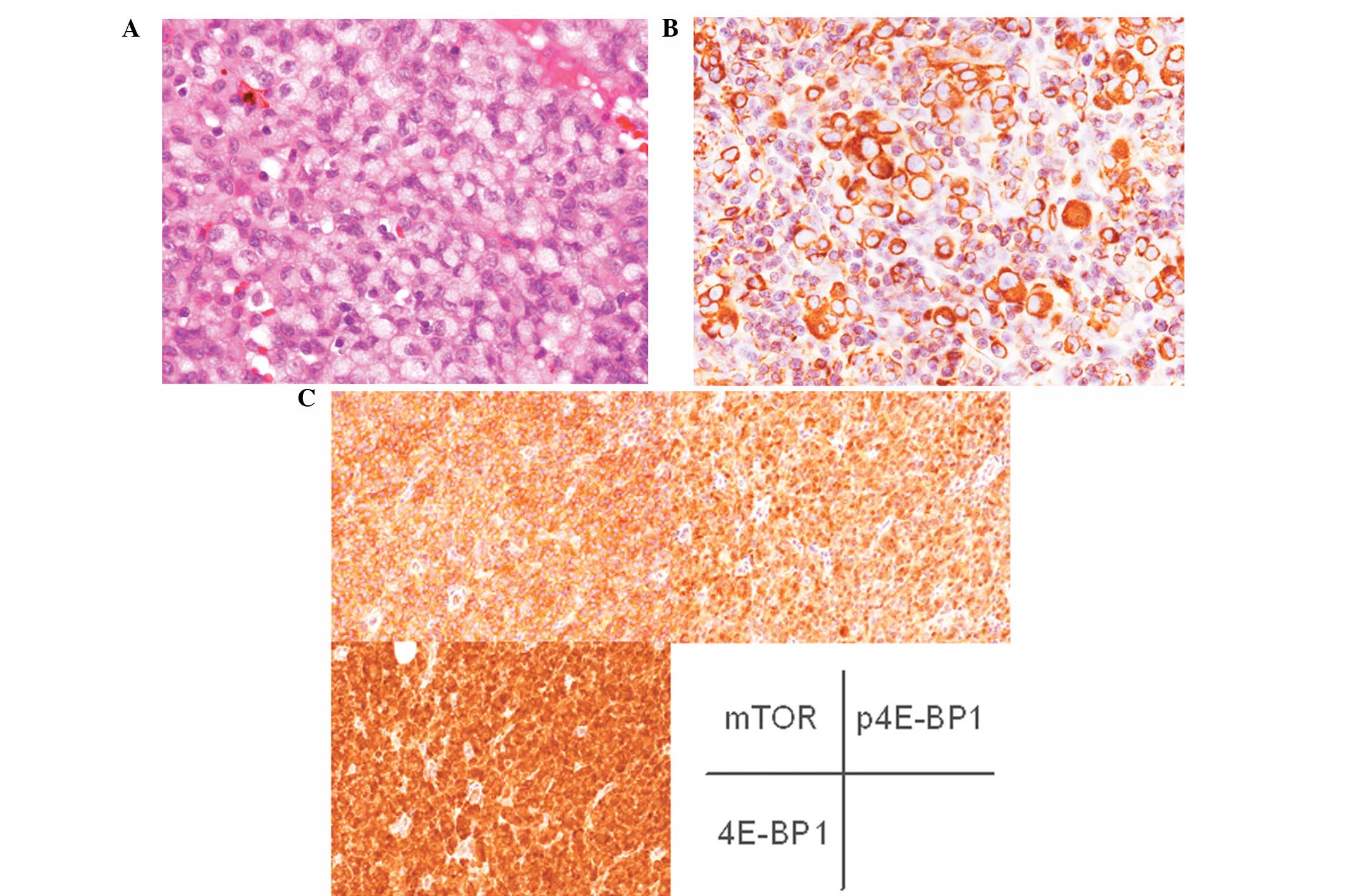Signet‑ring cell melanoma with sentinel lymph node metastasis: A case report with immunohistochemical analysis and review of the clinicopathological features
- Authors:
- Published online on: November 7, 2013 https://doi.org/10.3892/ol.2013.1669
- Pages: 65-68
Metrics:
Total
Views: 0 (Spandidos Publications: | PMC Statistics:
)
Total PDF Downloads: 0 (Spandidos Publications: | PMC Statistics:
)
Abstract
Signet‑ring cell melanoma is an extremely rare variant of malignant melanoma. A 68‑year‑old male presented with a black nodule on the left thigh. Histopathological examination revealed proliferation of sheet‑like or variable‑sized nests of atypical melanocytes. Neoplastic cells showing signet‑ring cell appearance, characterized by the presence of eccentrically located enlarged nuclei and abundant pale cytoplasm, were also present. Immunohistochemically, the tumor cells were positive for S‑100 protein, vimentin and Melan‑A. Moreover, mammalian target of rapamycin (mTOR) pathway proteins were diffusely expressed. The current case report presents the 21st reported case of signet‑ring cell melanoma. Analyses of the clinicopathological features revealed that this disease commonly affects middle‑aged males and the presence of metastatic signet‑ring cell melanoma with an unknown primary tumor. Immunohistochemical analyses of melanocytic markers have been useful for establishing the diagnosis of this type of disease, however, HMB‑45 is occasionally found to be negative. In addition, the present case report is the first to analyze the expression of mTOR pathway proteins, which are central proteins involved in carcinogenesis and its inhibitor has been proposed as a therapeutic target for various types of tumor. Therefore, the mTOR inhibitor may also be a potential candidate for the treatment of this type of tumor.











